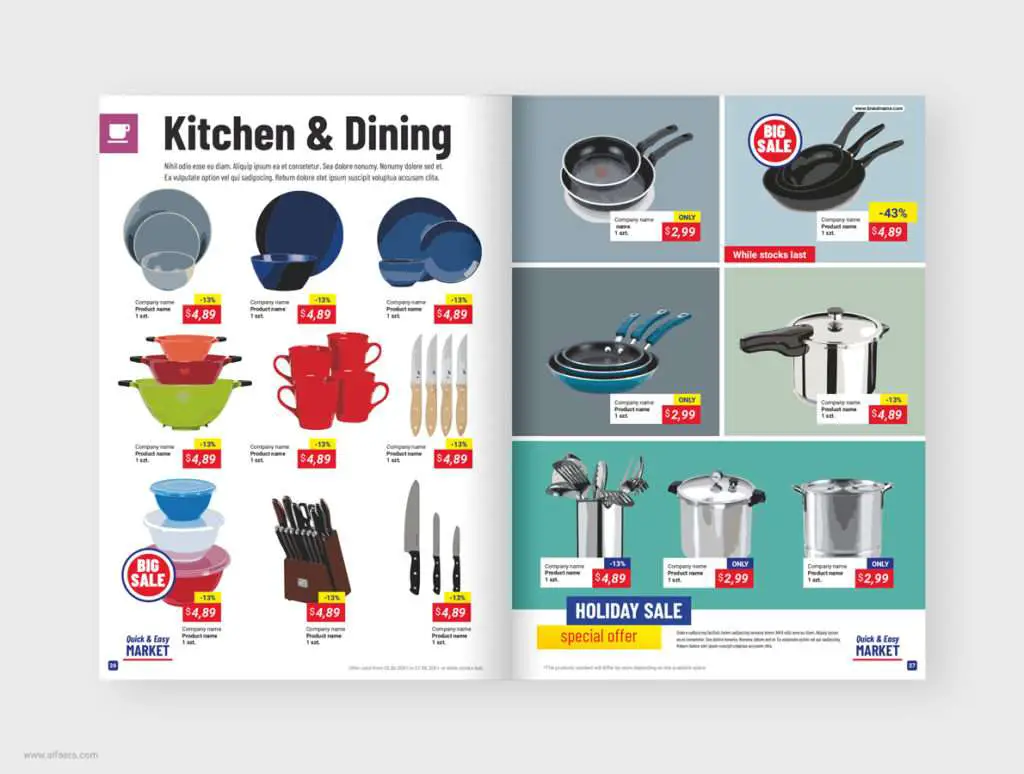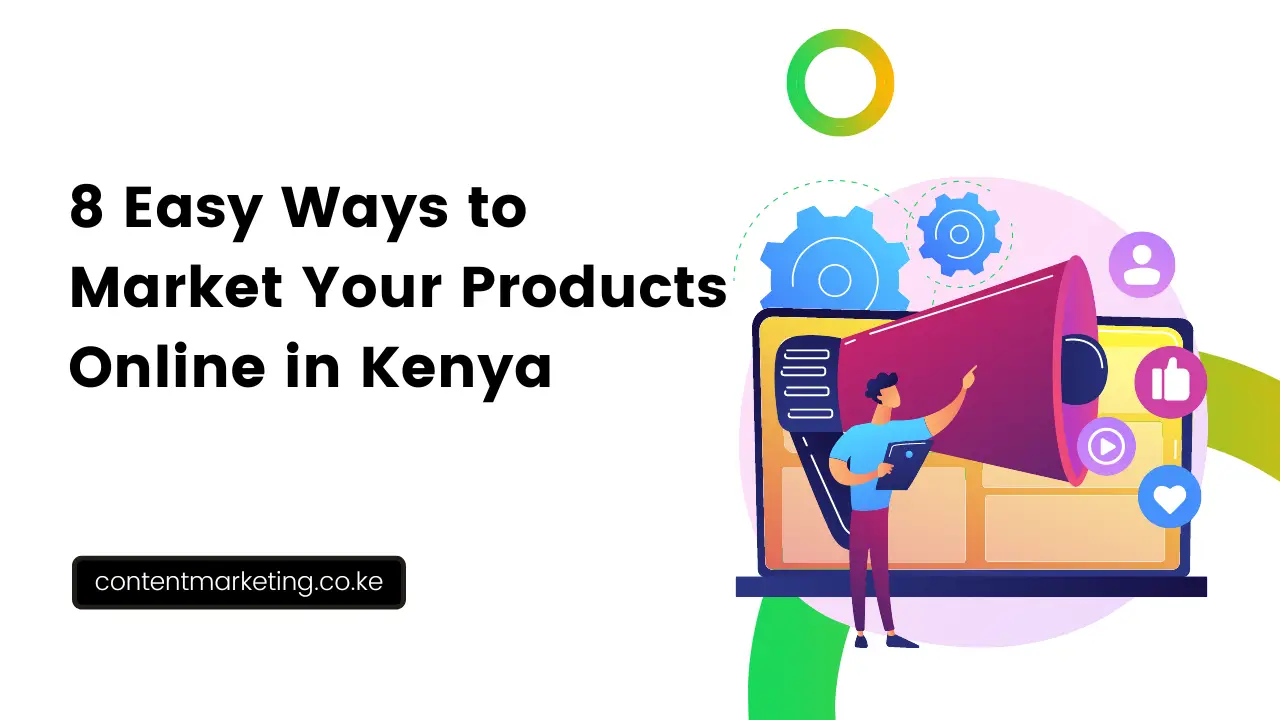Are you a budding entrepreneur in Kenya looking to tap into the online marketplace? If so, you may be wondering about the best strategies for creating and selling physical products online. With the ever-growing popularity of e-commerce, the opportunities for success in this realm are abundant. In this article, we will explore the most effective methods and platforms to help you navigate the online marketplace and maximize your sales potential. Whether you’re selling clothing, beauty products, or handmade crafts, we’ve got you covered with valuable insights and practical tips to help you thrive in the world of online retail. So, let’s get started on your journey to online success!

This image is property of creativekigen.com.
Choosing the Right Product
Researching the Market
When it comes to creating and selling physical products online in Kenya, one of the first steps you should take is researching the market. This involves understanding the current trends, customer preferences, and identifying potential opportunities. By conducting thorough market research, you can gain valuable insights into what products are in demand and what people are willing to buy. This information will help you make informed decisions about the type of product you should create and sell online.
Identifying Popular Products
After conducting market research, it is crucial to identify popular products in the Kenyan market. Look for products that have a high demand and are likely to attract a large customer base. This could be everyday items that people regularly use or trendy products that are currently in high demand. Identifying popular products will increase your chances of success as an online seller in Kenya.
Assessing Market Demand
Once you have identified popular products, it is essential to assess the market demand. This involves evaluating the level of competition, analyzing the target audience, and understanding the purchasing power of your potential customers. By assessing market demand, you can gauge whether there is a sustainable market for your chosen product. This information will guide your decision-making process and help you determine if it is worth investing time and resources into developing and selling the product.
Considering Product Margins
Another crucial factor to consider when creating and selling physical products online in Kenya is the product margins. Product margins refer to the difference between the cost of producing the product and the price at which it is sold. It is essential to determine whether the margins are sufficient to cover your expenses and generate a reasonable profit. Consider the cost of raw materials, manufacturing, packaging, shipping, and marketing when calculating your product margins.
Evaluating Competition
Finally, when choosing the right product to create and sell online in Kenya, it is crucial to evaluate the competition. Research and analyze the existing competition in the market to understand their strengths, weaknesses, pricing strategies, and marketing tactics. By evaluating the competition, you can identify opportunities to differentiate your product and develop a unique selling proposition that will attract customers. Understanding the competitive landscape will also help you determine whether there is room for your product in the market.
Creating the Physical Product
Design and Prototyping
Once you have chosen the right product to create and sell online in Kenya, the next step is to focus on designing and prototyping. Designing a high-quality and aesthetically pleasing product is essential to attract customers. Consider hiring a professional designer or utilizing design software to create a prototype of your product. This will help you visualize the final product and make any necessary modifications before moving forward with manufacturing.
Finding Reliable Manufacturers
Finding reliable manufacturers is key to ensuring the quality and timely delivery of your physical product. Research and identify manufacturers in Kenya or consider sourcing from overseas if it offers cost advantages. Look for manufacturers with a proven track record, good reputation, and expertise in producing similar products. It is also important to consider the scalability of the manufacturer to meet your future production needs as your online business grows.
Quality Control
Maintaining consistent quality control is crucial for the success of your online business. Establish quality control protocols and processes to ensure that every product meets the set standards before reaching the customers. Regular inspections and product testing are recommended to identify any defects or issues early on and take corrective measures. By prioritizing quality control, you can build a reputation for delivering reliable and high-quality products to your customers.
Packaging and Branding
Packaging and branding play a significant role in creating a positive impression on your customers. Invest in attractive and durable packaging that reflects the values and identity of your brand. Consider incorporating eco-friendly packaging materials to align with the growing customer preference for sustainable products. Additionally, create a compelling brand message and design that resonates with your target audience. Your packaging and branding should be consistent across all your marketing channels and materials.
Sourcing Raw Materials
Sourcing high-quality raw materials is crucial to ensure the quality and durability of your physical product. Identify reliable suppliers and negotiate competitive prices for the raw materials you require. Consider the availability and sustainability of the raw materials in the long run to avoid disruptions in your supply chain. Work closely with your suppliers and establish strong relationships to ensure a steady supply of materials for your manufacturing processes.

This image is property of creativekigen.com.
Building an E-commerce Website
Choosing an E-commerce Platform
To sell your physical products online in Kenya, you need to set up an e-commerce website. One of the first steps in building your e-commerce website is choosing the right e-commerce platform. Consider factors such as ease of use, customizability, scalability, and availability of essential features like product listings, inventory management, and payment gateways. Popular e-commerce platforms in Kenya include Shopify, WooCommerce, and Magento.
Securing Domain and Hosting
Once you have chosen an e-commerce platform, you need to secure a domain name and hosting for your website. Select a domain name that is easy to remember and represents your brand effectively. Choose a reliable web hosting provider that ensures fast loading speed and provides secure hosting. A good hosting provider will also offer customer support to assist you with any technical issues that may arise.
Building a User-Friendly Interface
Creating a user-friendly interface is crucial to provide an excellent user experience for your customers. Optimize your website’s navigation, ensure clear and intuitive product categories, and provide an easy-to-use search function. Make sure your product pages are informative and include high-quality images, detailed descriptions, and customer reviews. Additionally, focus on responsive design to ensure your website works smoothly on all devices.
Implementing Payment Solutions
Implementing secure and convenient payment solutions is essential for your e-commerce website. Integrate multiple payment options such as credit cards, mobile money, and popular payment gateways like PayPal or M-Pesa. Ensure that your payment gateway is secure and complies with industry standards for data encryption and protection. Display trust indicators such as SSL certificates to instill confidence in your customers when making online transactions.
Ensuring Mobile Responsiveness
Given the widespread use of smartphones in Kenya, it is crucial to ensure that your e-commerce website is mobile responsive. Optimize your website design and layout to provide a seamless browsing and shopping experience on mobile devices. Pay attention to factors such as fast loading speed, easy navigation, and mobile-friendly checkout processes. A mobile-responsive website will enable you to reach and engage a larger audience.
Setting Up a Fulfillment System
Warehousing and Storage
Setting up an efficient warehousing and storage system is crucial to manage and fulfill customer orders effectively. Consider renting or leasing a warehouse space that meets your storage requirements. Implement a logical organization system to ensure easy access to products and streamline the order fulfillment process. Regularly audit your inventory to maintain accurate stock levels and prevent stockouts or excess inventory.
Order Management System
Implementing an order management system (OMS) is essential to efficiently manage and track customer orders from placement to fulfillment. An OMS helps you streamline the order processing workflow, generate shipping labels, and automatically update inventory levels. Look for OMS solutions that integrate well with your e-commerce platform and provide real-time visibility into order status for you and your customers.
Packaging and Shipping Solutions
Selecting the right packaging and shipping solutions can significantly impact customer satisfaction and your business’s overall efficiency. Invest in sturdy and appropriately sized packaging materials to ensure that your products arrive in excellent condition. Explore different shipping options and negotiate competitive rates with courier services or postal providers. Consider offering free shipping or discounted rates for specific order values to attract more customers.
Returns and Customer Service
Establishing a robust returns policy and providing excellent customer service is crucial to building trust and loyalty with your customers. Create a clear and fair returns policy that addresses customer concerns and makes the return process hassle-free. Train your customer service team to handle inquiries and complaints promptly and professionally. Delivering exceptional customer service will not only resolve any issues but also encourage repeat purchases.
Inventory Management
Efficient inventory management is vital for the success of your e-commerce business. Utilize inventory management software or tools that allow you to track stock levels, monitor product performance, and automate inventory replenishment. Regularly analyze sales data and trends to forecast demand accurately and avoid stockouts or overstocking. Implementing effective inventory management practices will optimize your cash flow and minimize the risk of overstocking or stockouts.

This image is property of truehost-coke.b-cdn.net.
Driving Traffic to the Online Store
Search Engine Optimization (SEO)
Search engine optimization (SEO) is a powerful strategy to drive organic traffic to your online store. Research relevant keywords and optimize your product pages, meta tags, and content to improve your website’s visibility in search engine results. Focus on creating high-quality and valuable content that addresses your target audience’s needs and interests. Regularly update your website with fresh content to maintain search engine rankings.
Pay-Per-Click (PPC) Advertising
Pay-per-click (PPC) advertising can be an effective way to drive targeted traffic to your online store. Platforms like Google Ads and Facebook Ads allow you to create highly targeted ad campaigns based on demographics, interests, and keywords. Set a budget, monitor your ad performance, and continuously optimize your campaigns to maximize conversions and return on investment (ROI).
Social Media Marketing
Leverage the power of social media marketing to promote your online store and engage with your target audience. Identify the social media platforms that your target customers frequent and create compelling and shareable content. Use social media advertising features to reach a broader audience and target specific demographics or interests. Build a community around your brand by engaging with your followers and responding to their comments and messages.
Content Marketing
Content marketing involves creating and sharing valuable content to attract and engage your target audience. Produce informative blog articles, how-to guides, and product reviews that provide value to your customers. Optimize your content for search engines and share it through various channels, including your website, social media, and email newsletters. Consistent and valuable content will position your online store as a trusted source of information and drive traffic to your website.
Influencer Partnerships
Collaborating with influencers can help increase brand awareness and drive traffic to your online store. Identify influencers in your niche who have a substantial following and engage with your target audience. Partner with influencers to create sponsored content, reviews, giveaways, or exclusive discount codes. Their endorsement and recommendations can significantly impact consumer behavior and generate interest in your products.
Effective Product Listing
Writing Compelling Descriptions
Writing compelling product descriptions is crucial to attract and persuade potential customers. Clearly list the key features and benefits of your product, highlighting what sets it apart from the competition. Use persuasive language and storytelling techniques to evoke emotions and create a connection between the customer and the product. Consider incorporating keywords relevant to your product and target audience to improve search engine visibility.
High-Quality Product Images
High-quality product images are essential for showcasing your physical products effectively. Invest in professional product photography or learn how to capture high-resolution images that accurately represent your products. Use multiple angles and close-ups to provide a detailed view of the product. Ensure that the product images are well-lit, sharp, and visually appealing. Including images of the product being used or in different settings can help customers visualize its benefits.
Keyword Optimization
Optimizing your product listings with relevant keywords is crucial for improving search engine visibility and attracting organic traffic. Research keywords related to your product, target audience, and niche market. Incorporate these keywords naturally in your product titles, descriptions, and alt tags for images. Avoid keyword stuffing and prioritize delivering valuable and comprehensive information to your customers.
Pricing Strategies
Developing effective pricing strategies is essential to attract customers while maintaining profitability. Conduct competitive research to understand the pricing trends in your market. Consider factors such as production costs, competitor prices, and customer perceived value when setting your product prices. Pricing strategies such as offering discounts, bundles, or volume pricing can help drive sales and create a competitive advantage.
Review and Rating Management
Managing customer reviews and ratings is crucial for building trust and credibility for your online store. Encourage customers to leave reviews and ratings after making a purchase. Respond to both positive and negative reviews promptly and professionally. Implement a review management system that allows you to monitor and address customer feedback. Positive reviews and high ratings will encourage other customers to trust your products and make a purchase.

This image is property of truehost-coke.b-cdn.net.
Building a Brand Identity
Creating a Memorable Logo
Creating a memorable logo is essential for building a strong brand identity. Design a logo that represents your brand’s values, mission, and unique selling proposition. Invest in professional logo design services or use logo design software to create a visually appealing and impactful logo. Ensure that your logo is consistent across all your marketing materials, website, and social media profiles.
Crafting a Brand Story
Crafting a compelling brand story helps consumers connect with your brand on an emotional level. Clearly communicate your brand’s history, mission, and values through your website, social media, and marketing materials. Engage with your audience by sharing behind-the-scenes stories, customer testimonials, or the inspiration behind your products. A well-crafted brand story can differentiate your business and foster brand loyalty.
Consistent Visual Identity
Maintaining a consistent visual identity is essential for brand recognition and recall. Develop a style guide that outlines the color palette, typography, and visual elements that reflect your brand. Apply this visual identity consistently across your website, packaging, marketing materials, and social media profiles. Consistency in visual elements helps customers identify and connect with your brand across different touchpoints.
Brand Voice and Messaging
Establishing a consistent brand voice and messaging is crucial to build a strong brand identity. Define the tone, language, and communication style that aligns with your brand values and resonates with your target audience. Use this brand voice in all your written content, including website copy, product descriptions, social media captions, and customer emails. Consistent brand messaging helps differentiate your brand and build trust with your audience.
Social Proof and Testimonials
Utilizing social proof and testimonials can help build trust and credibility for your brand. Encourage satisfied customers to leave testimonials or reviews, and display them prominently on your website. Consider featuring customer success stories or user-generated content that showcases the positive experiences customers have had with your products. Social proof can significantly influence potential customers’ purchase decisions and drive more sales.
Implementing Secure Payment Systems
Offering Multiple Payment Options
Offering multiple payment options helps cater to the preferences and convenience of different customers. Ensure that your e-commerce website integrates popular payment methods such as credit cards, mobile money, and digital wallets. Consider partnering with secure payment gateways to facilitate smooth and secure transactions. Offering a variety of payment options can reduce cart abandonment rates and boost customer satisfaction.
Secure Payment Gateway Integration
Integrating a secure payment gateway is crucial to protect customer payment information and prevent fraud. Choose a reputable payment gateway provider that complies with industry standards and offers robust security measures. Ensure that your payment gateway supports encryption and tokenization to safeguard sensitive customer data. Regularly update your payment gateway systems to stay protected against emerging threats.
Fraud Prevention Measures
Implementing fraud prevention measures is essential to protect your online store and customers from fraudulent activities. Utilize fraud detection tools and techniques to identify and prevent suspicious transactions. Implement address and card verification processes to ensure the legitimacy of customer information. Stay updated on the latest fraud trends and continually educate your staff on effective fraud prevention strategies.
Data Encryption and Protection
Protecting customer data is paramount for building trust and complying with privacy regulations. Employ strong data encryption methods to secure customer information during transmission and storage. Regularly backup customer data and implement disaster recovery measures to minimize the risk of data loss. Develop and communicate a strong privacy policy that outlines how customer data is collected, used, and protected.
PCI-DSS Compliance
Ensure that your online store is compliant with the Payment Card Industry Data Security Standard (PCI-DSS). PCI-DSS compliance helps protect customer payment information and ensures secure transactions. Conduct regular security audits and maintain documentation to demonstrate your compliance. Collaborate with a PCI-certified hosting provider or payment gateway to ensure that your e-commerce website meets the necessary security requirements.

This image is property of contentmarketing.co.ke.
Utilizing Online Marketplaces
Listing Products on Popular Marketplaces
Expanding your reach by listing your products on popular online marketplaces can significantly increase your sales and visibility. Identify the leading online marketplaces in Kenya, such as Jumia or Kilimall, and create seller accounts. Optimize your product listings to stand out from competitors and attract potential customers. Leverage the marketing and advertising opportunities provided by the marketplaces to increase your product visibility.
Account Setup and Verification
Setting up and verifying your seller account on online marketplaces is an important step to start selling. Follow the platform’s guidelines and procedures to create an account as a seller. Provide accurate and complete information during the verification process to gain trust from customers and the marketplace platform. Verifying your account helps build credibility and allows you to enjoy the benefits and features offered to sellers.
Optimizing Product Listings
Optimize your product listings on online marketplaces to maximize visibility and sales. Write compelling and detailed product descriptions that highlight the key features, benefits, and uniqueness of your product. Use high-quality images that accurately represent the product. Research relevant keywords for your product and incorporate them naturally in the title, description, and tags. Regularly monitor and update your product listings to stay competitive.
Managing Inventory and Orders
Efficiently managing inventory and orders is crucial when selling on online marketplaces. Ensure accurate and real-time inventory synchronization between your e-commerce website and the marketplace platforms. Use inventory management systems or software that integrate with your e-commerce platform and online marketplaces. Regularly update stock levels to prevent overselling and ensure prompt order fulfillment.
Customer Feedback and Reviews
Promptly address customer feedback and reviews on online marketplaces to build trust and loyalty with potential customers. Encourage happy customers to leave positive reviews and respond to negative reviews in a professional and empathetic manner. Demonstrate your willingness to resolve any issues and provide excellent customer service. Positive customer feedback and reviews will boost your credibility and attract more customers.
Building Customer Trust and Loyalty
Providing Excellent Customer Service
Providing excellent customer service should be a top priority for your online store in Kenya. Offer multiple customer support channels such as email, live chat, and phone to cater to various customer preferences. Respond promptly to customer inquiries and concerns, and strive to exceed their expectations. Train your customer service team to handle customer complaints professionally and with empathy.
Offering Hassle-free Returns
Creating a hassle-free returns policy is crucial to build trust and confidence with your customers. Clearly communicate your returns policy, including the time frame and conditions for returns. Simplify the returns process by providing prepaid return labels or arranging for pick-ups. Make the refund process quick and efficient to ensure a positive customer experience. A hassle-free returns policy will demonstrate your commitment to customer satisfaction.
Implementing Loyalty Programs
Implementing loyalty programs can be an effective way to encourage repeat purchases and build customer loyalty. Offer rewards such as exclusive discounts, free shipping, or points that can be redeemed for future purchases. Personalize the loyalty program by tailoring rewards to individual customer preferences and purchase history. Regularly communicate with your loyal customers and provide them with special offers or sneak peeks of new products.
Collecting and Utilizing Customer Feedback
Collecting and utilizing customer feedback is essential for continuously improving your online store and product offerings. Implement feedback mechanisms such as surveys, reviews, or feedback forms to gather insights from customers. Analyze the feedback to identify areas for improvement and implement necessary changes. Customers appreciate businesses that listen to their opinions and take action to meet their needs and preferences.
Personalization and Customization
Offering personalized and customized options can enhance the customer experience and differentiate your online store in Kenya. Utilize customer data to provide personalized product recommendations or offers based on their preferences and purchase history. Allow customers to customize certain aspects of your products, such as color or size. Personalization and customization create a sense of exclusivity and make customers feel valued and appreciated.


